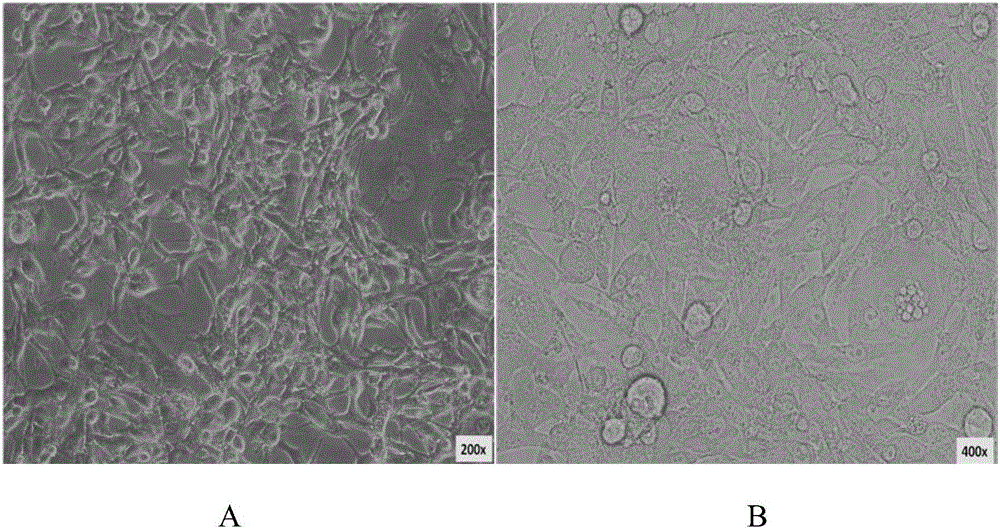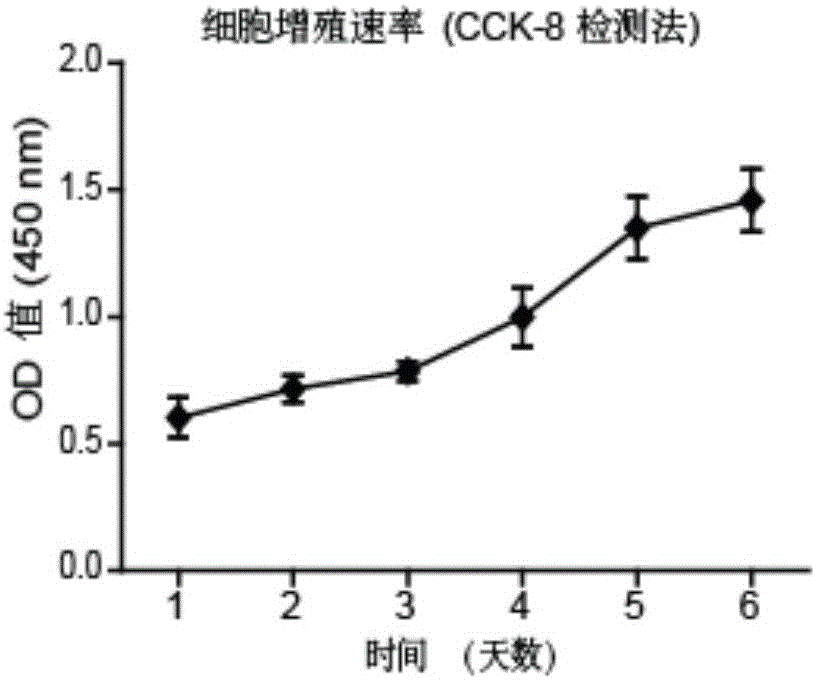Hepatoma cell line STL-C1 derived from human hepatoma a-carcinoma tissue and establishment method thereof
A technology of STL-C1, liver cancer cell line, applied in the field of liver cancer cell line STL-C1 and its construction
- Summary
- Abstract
- Description
- Claims
- Application Information
AI Technical Summary
Problems solved by technology
Method used
Image
Examples
Embodiment 1
[0040] 1. Experimental reagents and materials
[0041] 1. Experimental reagents
[0042] (1) Cell culture reagents: DMEM / F12 (1:1) culture medium (Gibco, USA), 10% (v / v) fetal bovine serum (Biochrom AG, USA); 100U / L penicillin and 0.1mg / L chain Mycin (Shanghai Boguang Biological Company) had a final working concentration of 100 U / mL and 0.1 mg / mL; human recombinant bFGF stem cell growth factor (Peprotech, USA); insulin-transferrin-selenium supplement (ITS Lipid Media Supplement, 100× ) (Sigma, USA), composed of 1.0mg / ml recombinant human insulin, 0.55mg / ml human transferrin and 0.5μg / ml sodium selenite, added to 10% (v / v) in the DMEM / F12 culture fluid of fetal calf serum;
[0043] (2) Other materials required for cell culture and cell separation: D-Hank's balanced salt solution (pH 7.2-7.4), collagenase type IV (Sigma, USA), heparin injection, 50 μm pore size cell nylon mesh (BD Biosciences, USA), Percoll solution, phosphate buffered saline (PBS) (pH=7.4), 0.25% (w / v) tryp...
PUM
 Login to View More
Login to View More Abstract
Description
Claims
Application Information
 Login to View More
Login to View More - R&D
- Intellectual Property
- Life Sciences
- Materials
- Tech Scout
- Unparalleled Data Quality
- Higher Quality Content
- 60% Fewer Hallucinations
Browse by: Latest US Patents, China's latest patents, Technical Efficacy Thesaurus, Application Domain, Technology Topic, Popular Technical Reports.
© 2025 PatSnap. All rights reserved.Legal|Privacy policy|Modern Slavery Act Transparency Statement|Sitemap|About US| Contact US: help@patsnap.com



